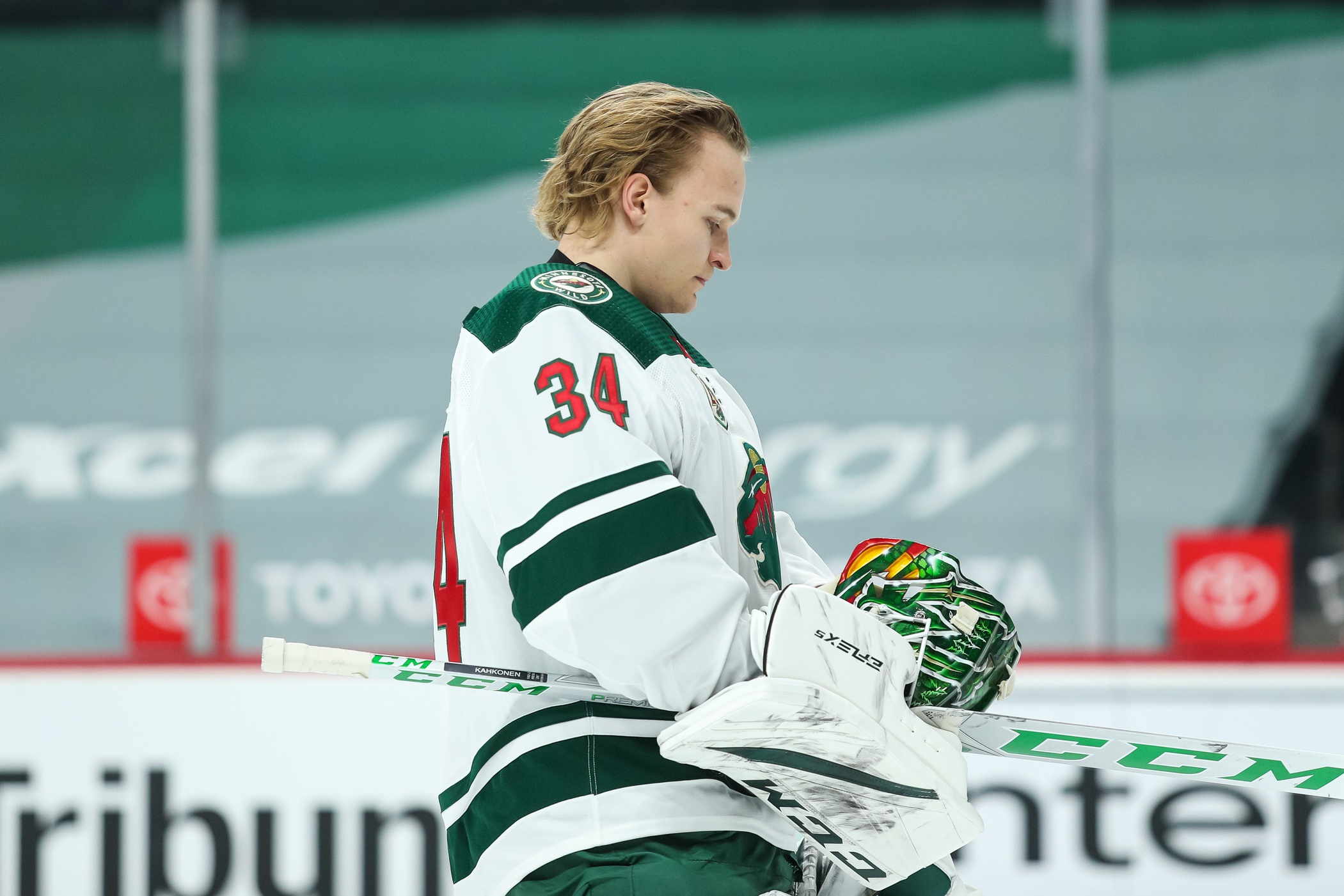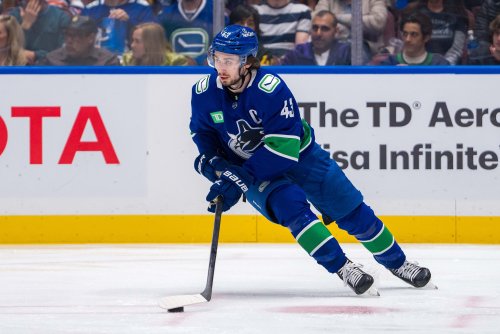
It’s hard to remember anything but the last three years of Devan Dubnyk, when age robbed his effectiveness. Perhaps that’s unfair, but ugly endings have a nasty way of sticking in our memories. Dig deep through your brain and you’ll recall when Dubnyk was a massive part of the Minnesota Wild’s success.
One can point out that Minnesota's elite defense made things easy on Dubnyk. Still, the Wild found out in 2019-20 that only helps if he’s capable of making those stops. For his first four seasons in Minnesota (2014-15 through 2017-18), he was, sporting a .922 save percentage. The only goalies to average 30-plus starts who performed as well or better were Corey Crawford (.923) and John Gibson (.922).
Sadly, the State of Hockey got a near-yearly glimpse of the Future Dubnyk in the playoffs. He posted a paltry .904 save percentage in the postseason. That overall number isn’t skewed by a particularly bad series or anything, as a series-by-series breakdown shows how consistently underwhelming he was.
vs. STL, 2015: .913
vs. CHI, 2015: .901
vs. DAL, 2016: .877
vs. STL, 2017: .925
vs. WPG, 2018: .908
With the exception of the 2017 St. Louis Blues series, where he was out-dueled by Jake Allen, those are lousy numbers across the board. So what happened?
It’s probably not just one thing. The playoffs are a step up in competition, so he was facing better shooters each night. Opposing coaches had time to gameplan for Dubnyk’s specific tendencies coming into a seven-game series.
It’s also very possible that overuse was the culprit of his struggles. In those four years, Dubnyk started 227 of a possible 286 games for the Wild — 79.3% of the starts. Oftentimes it was necessary, as Minnesota didn’t have a reliable backup and wouldn’t clinch a playoff spot until late.
While there are still a handful of workhorse goalies in the NHL like Andrei Vasilevskiy, those are increasingly rare. The league is turning to a shared workload in the regular season, even if only to preserve the primary starter for the postseason. The Dallas Stars, St. Louis, Boston Bruins, Vegas Golden Knights, and, of course, Bill Guerin's former team, the Pittsburgh Penguins are all examples of teams that got to or won the Cup Final without playing a goaltender for 50-plus starts in the regular season.
This brings us to the Wild’s current starting goaltender, Cam Talbot. At first glance, the Wild appear to be utilizing a tandem approach with their goalies. Talbot has started 31 of 52 games (60% of the starts) and backup Kaapo Kahkonen has 21 starts.
Look a bit deeper, though, and you’ll see that Talbot is used much more similarly to Dubnyk. Talbot has been out for stretches twice this season, once for an injury, another for coronavirus. Nine of Kahkonen’s 21 starts came during these times. So when coach Dean Evason has had the option, he’s opted to go with Talbot 31 of 43 times (72%). That’s a very Dubnyk-like 59-start pace over 82 games.
There are reasons for this, such as a recent 14-game stretch where Talbot went 11-1-2 with a .936 save%. Sometimes you’ve got to ride the hot hand! But in early March, when Kahkonen was in the midst of a nine-game winning streak, Evason had no issues taking him out of the lineup, sometimes for consecutive games.
When Kahkonen cooled down, Evason relegated Kahkonen to Alex Stalock status on the bench. Since April 1, Talbot has started 14 times in 18 games (78%). There’s no doubt Talbot deserves to be the primary goaltender. He’s got a .918 to .909 advantage in save percentage and has certainly looked more consistent from game to game. Still, it’s perhaps not the best thing for a 24-year-old goalie’s development to draw in only once every five games.
It might not even be the best thing for Talbot, either. Remember how Dubnyk had to start every game for Minnesota because they took so long to clinch? That didn’t happen this year. The Wild officially punched their ticket nearly two weeks ago. Since then, Talbot has started in four of five games, including back-to-back contests against St. Louis. Yes, the Wild are still fighting for playoff positioning, but is that workload truly necessary?
Coincidence or not, the Wild are starting to see diminishing returns from Talbot. Since Minnesota clinched, Talbot has an .857 save percentage, allowing 17 goals on 9.5 expected. Not exactly peaking at the right time.
Does this mean Talbot is doomed to playoff disappointment in the same vein as Dubnyk? No. This is a shortened season, for one, so Talbot won’t start more than 35 times this regular season. And in two postseason trips as the primary starter, Talbot posted a .924 save percentage in both. One came after a 73-start season, and the other after he started 26 games. So, who knows?
Still, one can’t help but second-guess how the Wild are handling their goaltenders entering the postseason. Vegas, Minnesota’s opponent these last two games, is defending a lead for a Division Championship, yet they’re still rotating Marc-Andre Fleury and Robin Lehner frequently down the stretch. Their goaltenders are going to be fresh for the playoffs. Can Minnesota confidently say the same thing?
If not, the State of Hockey could see a very familiar ending to this season’s story.
Think you could write a story like this? Hockey Wilderness wants you to develop your voice, find an audience, and we'll pay you to do it. Just fill out this form.







Recommended Comments
Join the conversation
You can post now and register later. If you have an account, sign in now to post with your account.
Note: Your post will require moderator approval before it will be visible.